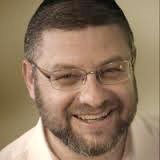
News

Torah stories for grown-ups
Rabbi Dr David Nossel
Not only this, but the tabernacle was a temporary structure, commissioned for the one-time journey from Egypt back to the promised land. We no longer have the tabernacle, nor do we anticipate it ever coming back.
The only break in the Torah’s long story of the tabernacle is the short story of the golden calf. Due to a miscalculation, the Jewish people thought that Moses was not coming down from Mount Sinai. So they made a golden calf. If that’s not bad enough, they worshipped it. This is more than mind-boggling. It’s utterly crazy.
Our rabbis make an interesting connection between these two stories. They say that the building of the tabernacle, the longer story, was an atonement – the antidote – for the shorter story, the sin of the golden calf.
More than a double story, this sounds like a tall story. How is the building of a tabernacle the opposite of worshipping a golden calf?
With a bit of thought we should be able to get to the bottom of the story. To “worship a calf” means to admire the traits of a calf. And the main trait of a calf is to suckle milk from its mother. The Jewish people at that time fell into the mistaken notion of adopting a relationship with G-d that is comparable to that of a calf that suckles from its mother’s milk. Not only did they admire this type of relationship, they held it in the highest esteem. In their eyes it was golden.
Their mistake was that they misunderstood the Torah’s message of the tabernacle. The Torah does not commission construction for the sake of a tabernacle – a place to get close to G-d. On the contrary, it commissions a tabernacle for the sake of construction – an opportunity to be similar to G-d. The construction of the Tabernacle was to teach us the importance of being constructive. First, we were meant to construct a model – a tabernacle, then a building – a temple, then a city, followed by the construction of a country, and ultimately a better world.
When G-d gave the Torah to us, his children, he did not give it to us as children’s stories. He gave it to us as an adult read – a guidebook on how to grow up and become his adult partners in constructing a better world. As our rabbis teach on Isaiah’s reference to us as bunayich – G-d’s children, “Don’t read bunayich – G-d’s children – but bonayich – G-d’s builders.”
So what should truly boggle the mind is the fact that the construction of the tabernacle occupies a mere four portions of the Torah.




